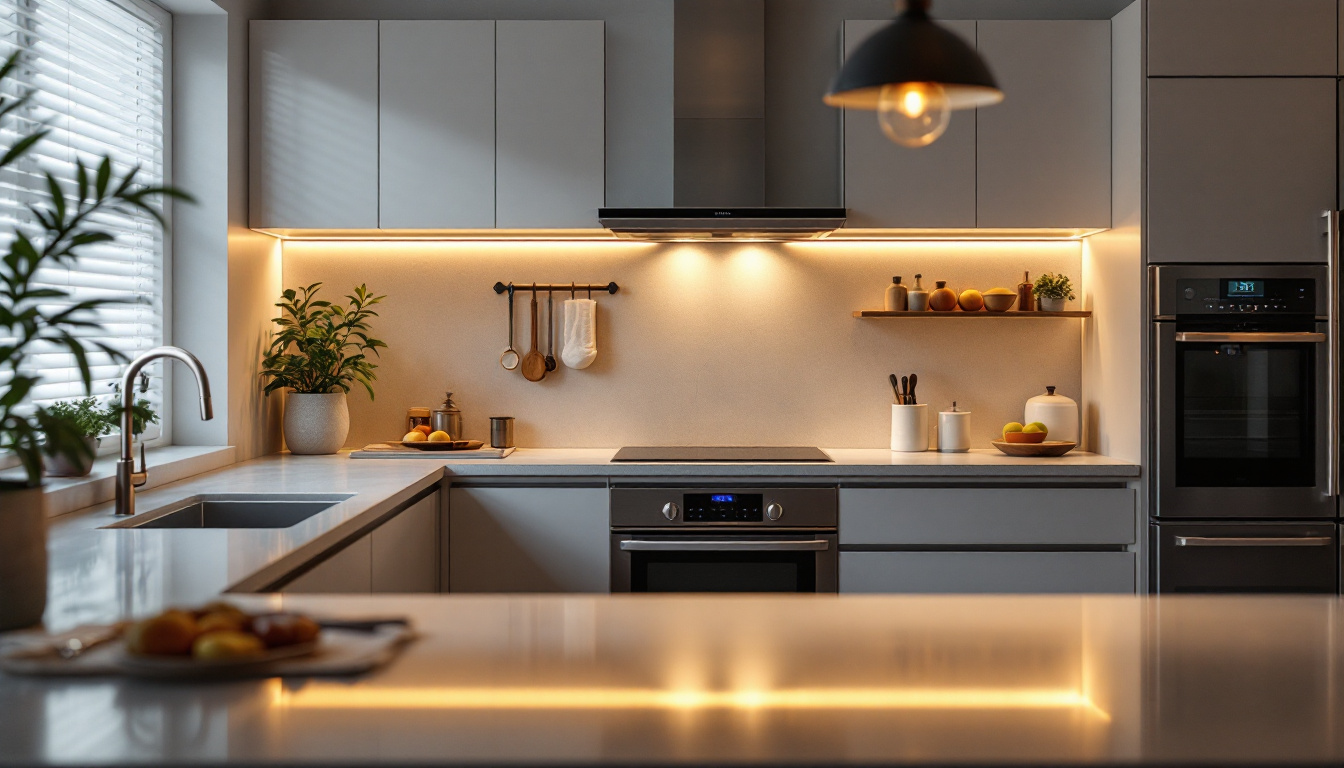
Lighting contractors are increasingly encountering T8 Type B LED tubes in their projects, a technology designed to offer energy efficiency and simplified installation. Unlike traditional fluorescent tubes, Type B LED tubes are ballast bypass lamps, meaning they operate without the need for an external ballast. This fundamental difference impacts installation procedures, safety considerations, and overall system performance.
Type B LED tubes are wired directly to the line voltage, which eliminates the ballast from the circuit. This can reduce maintenance costs and improve energy efficiency since ballasts often consume additional power and require periodic replacement. However, the direct wiring also means that the fixture must be rewired correctly to avoid hazards and ensure optimal operation.
For lighting contractors, understanding the electrical and mechanical characteristics of T8 Type B LEDs is critical. This knowledge helps avoid common pitfalls such as improper wiring, compatibility issues, and compliance problems with electrical codes.
Moreover, T8 Type B LED tubes are available in various color temperatures and lumen outputs, allowing contractors to tailor lighting solutions to specific environments and applications. For instance, a cooler color temperature may be more suitable for commercial spaces that require alertness and productivity, while warmer tones can create a more inviting atmosphere in hospitality settings. This flexibility not only enhances the aesthetic appeal of a space but also contributes to the overall functionality of the lighting design.
Additionally, the longevity of T8 Type B LED tubes is a significant advantage over traditional fluorescent options. With lifespans often exceeding 50,000 hours, these LEDs reduce the frequency of replacements, which is particularly beneficial in hard-to-reach fixtures. This durability not only translates to lower operational costs but also minimizes the environmental impact associated with the disposal of spent fluorescent tubes, making T8 Type B LEDs a more sustainable choice for modern lighting solutions.
Before proceeding with installation, it is essential to verify that the existing fixtures are compatible with Type B LED tubes. Since these tubes require ballast bypass, fixtures originally designed for fluorescent lamps with ballasts must be rewired accordingly. Contractors should inspect the fixture’s wiring and ensure that the ballast is removed or bypassed safely.
Consulting manufacturer specifications and datasheets is a vital step. Some Type B LED tubes are designed for single-ended or double-ended power input, and using the wrong type can lead to electrical failures or safety hazards. Confirming these details before installation prevents costly rework and liability issues. Additionally, it is advisable to keep a record of the compatibility checks and any modifications made to the fixtures, as this documentation can be invaluable for future maintenance or troubleshooting.
Adhering to local and national electrical codes is non-negotiable when working with T8 Type B LED tubes. Since these lamps involve direct wiring to line voltage, improper installation can pose shock and fire risks. Contractors should ensure that all wiring is performed by qualified personnel and that proper insulation and grounding practices are observed.
Using UL-listed or equivalent certified LED tubes and components further ensures compliance and safety. Many jurisdictions require such certifications for commercial and industrial lighting installations, so verifying product credentials is part of professional due diligence. Furthermore, staying updated on changes to electrical codes and safety standards is crucial, as regulations can evolve, impacting installation practices and product selections.
Once the ballast has been bypassed and the LED tube installed, testing the fixture is crucial. This includes checking for proper illumination, absence of flicker, and verifying that the wiring is secure and free from faults. Using a multimeter to confirm correct voltage and continuity can prevent future failures and warranty claims.
Additionally, contractors should observe the fixture during initial operation to detect any unusual heat buildup or electrical noise, which might indicate wiring errors or defective components. It is also beneficial to perform a thorough inspection of the light distribution pattern to ensure that the LED tubes provide adequate coverage for the intended space, as this can affect both aesthetics and functionality in commercial settings.
Lighting contractors play an important role in educating end-users about the differences between Type B LED tubes and traditional fluorescent lamps. Clients should be informed about the lack of ballast, the importance of not mixing LED tubes with fluorescent lamps in the same fixture, and the expected lifespan and energy savings.
Providing clear documentation and maintenance guidelines can reduce service calls and enhance customer satisfaction. It also helps clients understand the value proposition of LED upgrades, reinforcing the contractor’s expertise and professionalism. Moreover, offering insights into energy efficiency ratings and potential rebates or incentives available for LED installations can further motivate clients to embrace these modern lighting solutions, ensuring they appreciate the long-term benefits of their investment.
One of the most frequent errors lighting contractors encounter is installing Type B LED tubes into fixtures that still have the ballast connected. Since Type B LEDs are designed to operate without a ballast, leaving the ballast in place can cause premature failure of the LED tube or create hazardous conditions.
Contractors must remove or bypass the ballast according to manufacturer instructions before installation. Failure to do so not only voids warranties but can also lead to electrical malfunctions and increased liability. Additionally, it’s crucial to ensure that the wiring is correctly configured to handle the direct line voltage that Type B LEDs require. This means double-checking that all connections are secure and that the power supply is compatible with the new setup.
Mixing Type A (ballast compatible), Type B (ballast bypass), and Type C (external driver) LED tubes in the same fixture is a common mistake that can cause flickering, uneven lighting, or damage to the tubes. Each type has distinct electrical requirements, and combining them disrupts the circuit integrity.
To avoid this, contractors should standardize the LED tube type within each fixture and clearly label the fixtures to prevent future confusion during maintenance or upgrades. Furthermore, educating clients about the importance of using compatible LED types can help them make informed decisions when they consider future lighting upgrades or replacements. This proactive approach not only enhances the longevity of the installation but also fosters trust and satisfaction with the contractor’s services.
Since Type B LED tubes require direct wiring to line voltage, improper wiring can lead to serious safety risks. Common wiring mistakes include reversing polarity on single-ended tubes, failing to insulate exposed wires, or neglecting to secure connections properly.
Contractors should always follow wiring diagrams provided by the LED tube manufacturer and use appropriate tools and materials. Ensuring that connections are tight and protected from environmental factors extends the lifespan of the installation and reduces the risk of electrical faults. Moreover, implementing a thorough testing phase after installation can help identify any issues before the system is put into regular use. This step not only enhances safety but also ensures that the lighting performs as expected, meeting both aesthetic and functional requirements.
While T8 Type B LED tubes are versatile, they are not suitable for every environment or application. For example, fixtures in damp or wet locations may require specific IP ratings or additional protective housings. Similarly, dimming capabilities vary among LED tubes, and not all Type B tubes are compatible with dimmers.
Contractors should assess the installation environment and client requirements carefully before selecting Type B LEDs. Ignoring these factors can result in suboptimal performance and client dissatisfaction. Additionally, considering the energy efficiency and heat output of the selected LED tubes can further enhance the overall effectiveness of the lighting solution. By taking into account the specific needs of the space, such as whether it is used for task lighting or ambient illumination, contractors can tailor their choices to optimize both performance and energy savings, ultimately leading to a more successful installation.
One of the primary advantages of T8 Type B LED tubes is their potential for significant energy savings. By eliminating the ballast and using efficient LED technology, energy consumption can be reduced by up to 50% compared to traditional fluorescent systems. This translates into lower utility bills and a smaller carbon footprint for clients.
Additionally, LEDs have longer lifespans—often exceeding 50,000 hours—reducing the frequency and cost of replacements. For commercial and industrial clients, this means less downtime and lower maintenance expenses, which can be a compelling selling point for contractors.
Type B LED tubes often provide superior light quality, including better color rendering and consistent brightness. This can enhance the visual environment in workplaces, retail spaces, and public areas, contributing to improved productivity and customer experience.
Moreover, some Type B LED tubes are compatible with advanced lighting controls, such as occupancy sensors and daylight harvesting systems, allowing contractors to offer smarter, more responsive lighting solutions.
Because Type B LED tubes bypass the ballast, they simplify fixture design and reduce points of failure. For contractors, this means faster installation times and fewer components to manage. Retrofit projects benefit from this simplicity, as existing fluorescent fixtures can be converted with minimal disruption.
This ease of installation can improve project timelines and profitability, making Type B LED tubes an attractive option for a wide range of lighting upgrades.
For lighting contractors, T8 Type B LED tubes represent a valuable opportunity to deliver energy-efficient, cost-effective lighting solutions. However, success depends on a thorough understanding of the technology and adherence to best practices.
Verifying compatibility, following electrical codes, performing careful wiring, and educating clients are essential steps to ensure safe and reliable installations. Avoiding common mistakes such as neglecting ballast bypass or mixing LED types protects both the contractor’s reputation and the client’s investment.
By mastering the do’s and don’ts of T8 Type B LED installations, lighting contractors can enhance their service offerings, improve project outcomes, and contribute to a more sustainable built environment.
Ready to elevate your lighting installations with the efficiency and cost-effectiveness of T8 Type B LED tubes? Look no further than LumenWholesale, where we provide lighting contractors with the highest quality, spec-grade lighting products at unbeatable wholesale prices. Say goodbye to middleman markups and hello to superior lighting solutions that meet the most rigorous industry standards. Plus, with free shipping on bulk orders, you can stock up on premium lighting without the worry of hidden fees. Don’t compromise on quality or value—choose LumenWholesale for your next project and experience the perfect blend of quality, affordability, and convenience. Wholesale Lighting at the Best Value is just a click away.

Discover the ultimate guide for lighting contractors on LED light cans.

Explore the advantages and drawbacks of using vehicle wire running tools for lighting contractors.

Discover the essential facts about under cabinet kitchen lights from the perspective of lighting contractors.

Discover the ultimate guide to LED can lights with our comprehensive article.